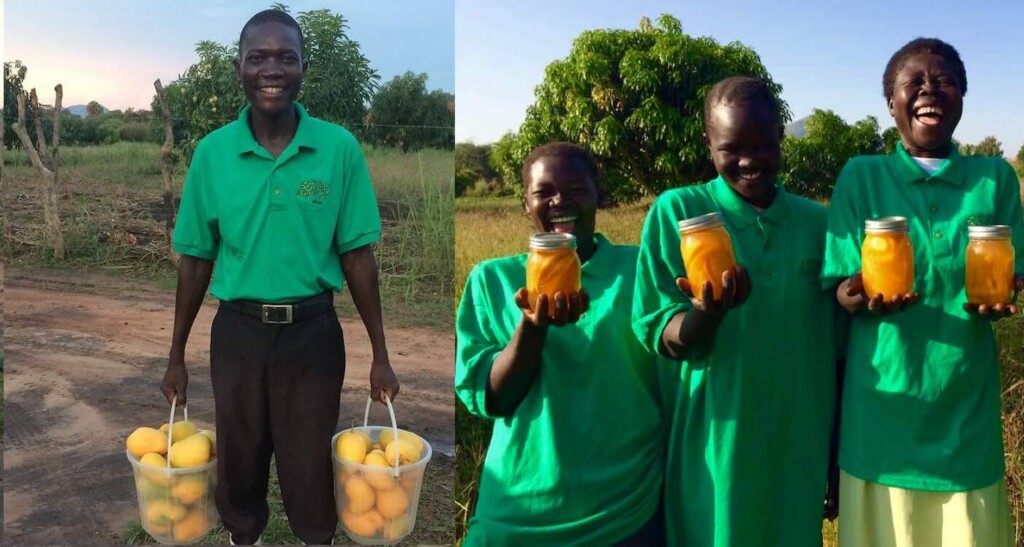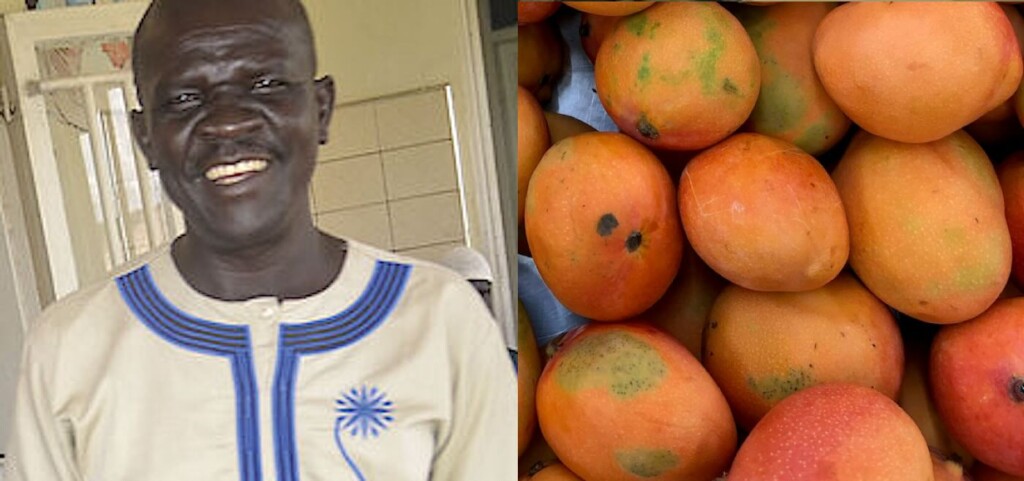 The Mango Project in Uganda (Courtesy of their Facebook page)
The Mango Project in Uganda (Courtesy of their Facebook page)In Uganda, a nurse was excited to start practicing medicine, but realized only afterwards that his patients didn’t so much need pharmaceuticals as proper nutrition.
14 years ago in northern Uganda’s Yumbe district, Francis Asiku was riding home from that nursing job having witnessed a four-year-old suffering from acute malnutrition. It was a disturbing experience he admits, but while passing by some mango trees in the village of Midigo, he saw birds feasting on mangos that were rotting on the ground.
A question stopped his pedals and his mind: why were the birds eating that nutritious fruit? Why was it left to rot? The epiphany which followed gave rise to the Mango Project, a local-led initiative to preserve mangoes from the two harvests per years, and get them into the mouths of the least-fortunate children.
“Should we wait for the government to come to our rescue, and yet the situation keeps getting worse?” he remembers asking his earliest colleagues on the Mango Project.
Malnutrition is a problem across Africa, and Uganda is no exception. Christian Science Monitor, reporting on the Mango Project, claimed that one-quarter of children have stunting, a condition that is associated with malnutrition.
One large mango isn’t exactly a superfood, but it does contain a whole day’s supply of vitamin C, and impactful amounts of copper, potassium, folate, vitamin A, manganese, and vitamin E.
The problem which Asiku and village elders who own the land the mangos grow on faced was that 40% of mangos are lost because communities like Midigo can’t afford refrigeration to preserve the fruit.
BE INSPIRED HERE: Solar Tricycle Startup Helps Entrepreneurial Women Be Drivers of Change in Africa
The Mango Project embarked upon an effort to slice mangoes every spring and winter harvest season and preserve them in jars of boiled water and a bit of sugar. Like this, they can last a year. The jars are then delivered to health centers and refugee settlements. During the COVID-19 years, the project distributed 12,000 jars of mangos.
 Francis Asiku, Founder of Uganda Mango Project
Francis Asiku, Founder of Uganda Mango ProjectAsiku has become a local champion and educator for proper childhood nutrition, armed with an orchard of 310 hybrid mango trees bred to resist fruit flies and erratic weather. He knows that mangos alone can’t resolve the problem: for example they contain virtually no protein or iron, vitamin B2, B1, choline, or zinc.
OTHER MANGO STORIES: Man Cultivates a Giant Mango Tree with Each Branch Growing a Different Variety of Fruit–and There Are 300
So in response to the interest in the project from donations, Asiku managed to squirrel away enough money to afford a solar-powered drier, with which he dries okra and eggplant, adding sources of vitamin K, B1, magnesium, and calcium.
He hopes to obtain a government license to distribute his foods further afield.
“It’s fulfilling to see my people smiling at the end of the day,” Mr. Asiku told CSM. “Malnutrition is still there, but this does not mean that we should give up.”
SHARE This Inspiring Endeavor To Solve Hunger At Home…
Source link

